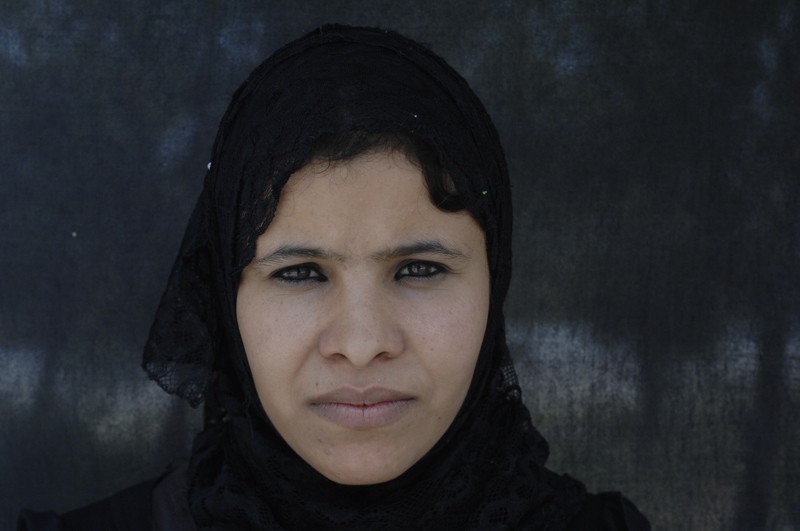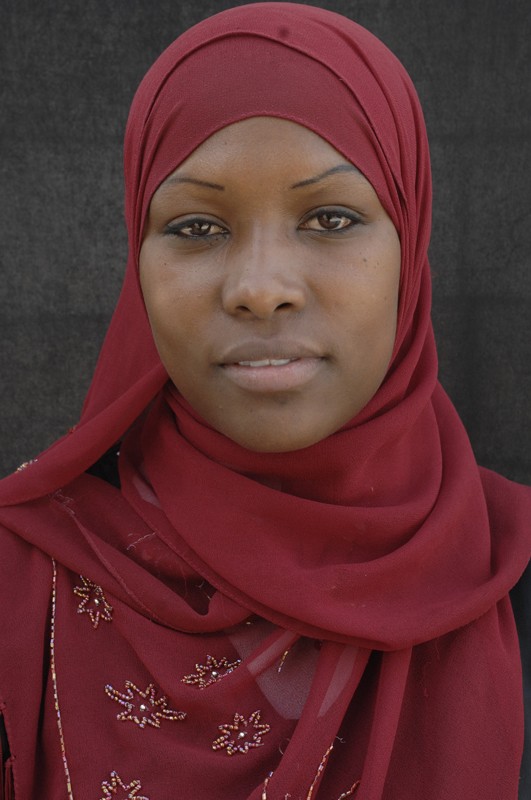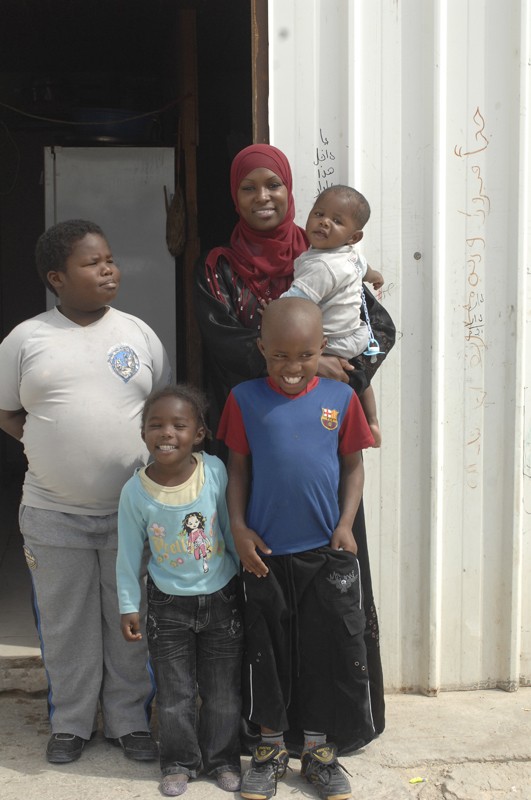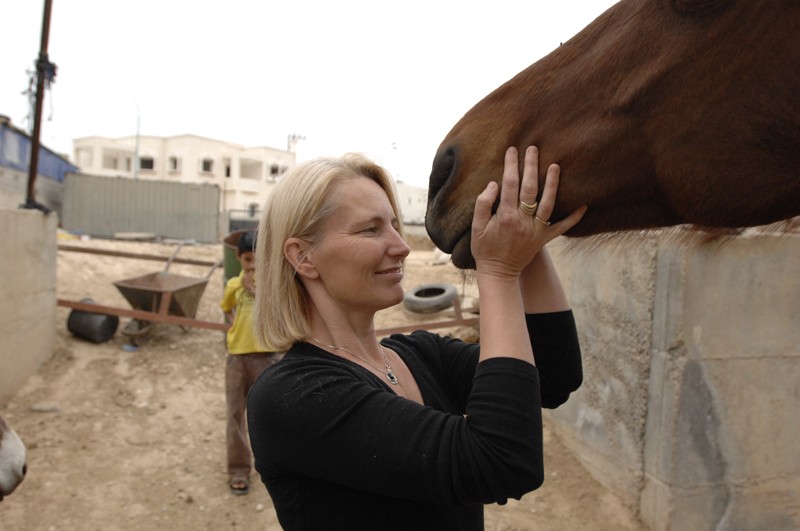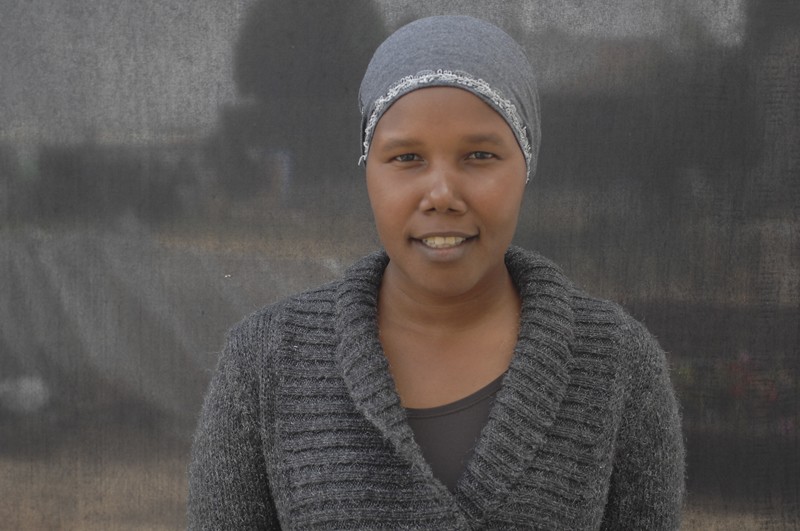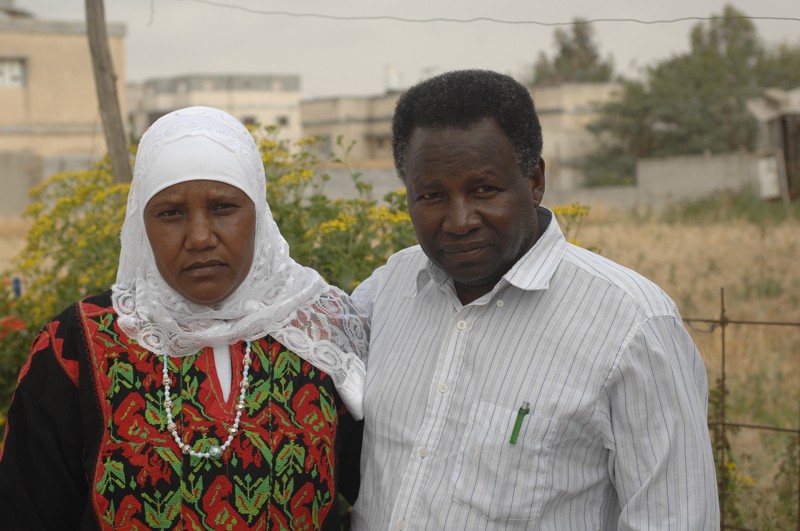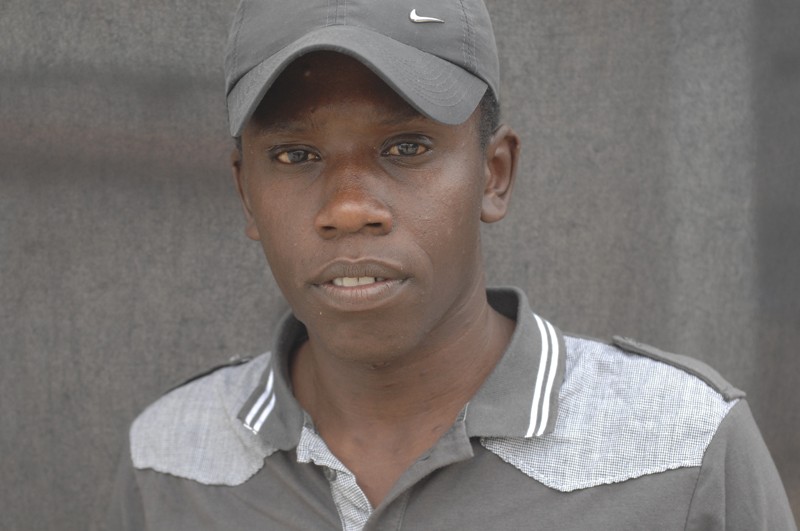Made up of four short films, all of which are directed by Bedouin directors in their debut as film makers, this unique film is an unprecedented authentic self-portrait of current life in Bedouin society. Portraying the struggle for progress that in many ways is held back by the traditions of the nomadic past. "Back and Forth" is the second documentary feature produced in the independent cinematic project in Rahat guided by Uri Rosenwaks, the first was: The Film Class
Burned Notebooks A young Bedouin woman looses her fight to gain an education and takes her own life, hanging herself outside the family's camp. In this striking story, Yusra uses dramatic footage combined with documentary shooting, and exposes the very tragic reality which dominates part of Bedouin society to this day.
Beduins Drown like Stones There are no swimming pools in any of the Bedouin cities or townships, only the neighboring Jewish towns and Kibbutzim have those facilities, and each year a few young Bedouins lose their lives in the sea. Documenting her own children as they first experience the sea, Kamla exposes these sad circumstances.
Janice Janice Abu Hani was born near Birmingham, England and has been living in Rahat for the past 20 years. While Janice is not the first women to have married into Bedouin society, she tries vigorously to make a difference – Janice is out-spoken and brave and refuses to accept the violence. And she rejects the place designated to women in this traditional society.
Obama of Rahat Morad follows the campaign of his father, Nasser, as he attempts to win a seat on the local municipal city council. With Barack Obama as his role model for change and hope, Nasser takes on an almost impossible challenge.
Additional Information:
For info about the program follow this link
Synopsis
Made up of four short films, all of which are directed by Bedouin directors in their debut as film makers, this unique film is an unprecedented authentic self-portrait of current life in Bedouin society. Portraying the struggle for progress that in many ways is held back by the traditions of the nomadic past. "Back and Forth" is the second documentary feature produced in the independent cinematic project in Rahat guided by Uri Rosenwaks, the first was: The Film...
Awards
- Special Honorary Mention - Tranzyt International Film Festival, Poland, 2011
Festivals
- "WORLD OF KNOWLEDGE" International Film Festival, St.-Petersburg, Russia, 2012
- Transit International Documentary Film Festival, Poland, 2011
- What Can Cinema Do International Film Festival, Paris, 2011
- XX International Festival of Ethnological Film, Belgrade Serbia, 2011
Additional info
Gallery
Press & Links:
Janice Abu Hani, 42, explains why she ditched her animal-loving life in the Midlands for the Israeli desert....
I HAD a typically English childhood. I grew up in Acocks Green in Birmingham with my parents and elder sister. I was always mad about horses and went riding every weekend. My grandad used to work on the railways with the big shire horses and my dad always kept a couple.
Read more about Janis Abu Hani, check: http://www.express.co.uk/posts/view/234979/From-Brummie-lass-to-a-Bedouin-brideFrom-Brummie-lass-to-a-Bedouin-bride#ixzz1HDQTGQkI"Women in Bedouin Society are agents of change... And one way to change is through filmmaking" - Filmmaker Uri Rosenwaks
To read the entire review "Getting Behind the Camera" about Filmmaker Rosenwaks' documentaries "The Film Class" and "Back and Forth" at The Jerusalem Report, check: http://www.scribd.com/doc/48278354/The-Jerusalem-Report-Getting-Behind-the-CIn November 2010, I hosted the Israeli filmmaker Uri Rosewaks for a screening of his latest project Back and Forth. The project itself—a compilation of four short films by Bedouin directors in their debut as filmmakers—presents what is to the best of my knowledge the first ever documentary of feature films to be directed by Bedouin and is groundbreaking in providing an intimate and authentic insight into Bedouin society, rarely if ever seen before. In his introduction to the film and in the question and answer session that followed the screening, Rosenwaks superbly framed the film, masterfully addressing a wide range of questions that touched on issues that go well beyond the films themselves.
Prof. Shai Ginsburg
Duke UniversityI was absolutely transfixed by the aesthetic of 'Back and Forth' which I thought provided a very interesting glimpse of contemporary Bedouin culture through stories told from the inside.
The fact that the four stories were so different and yet bound by a shared sadness and difficulty born of marginality gave the film a real power. beautiful.
Dr. Oren Harman
Author of : "The Price of Altruism"
In the fourth film, the couple’s daughter returns from Germany, where she is the first Bedouin woman to go to medical school. The implicit message of the films’ creation (three of the four filmmakers are female) is simple: The greatest hope for Bedouin society can come from allowing women’s . voices to speak, and allowing as many people as possible to listen.
For the entire review by Jordana Horn/Forward, check: http://www.forward.com/articles/133175/
The producer Uri Rosenwaks explained how this film was made – by Bedouin women learning the art of film-making – and the impact that this can have on conservative, traditional male-dominated society. Rosenwaks provided much background information on the problems of modernization and urbanization facing this conservative nomadic culture. He also gave an illuminating discussion of the relations between disadvantaged Bedouin society and the Israeli state – over inadequate budgets for education and other infrastructure, over land rights and in general over identity issues in a modern society. Rosenwaks is a very effective communicator and held the interest of a large class throughout his extended, impromptu lecture.
Prof. Ronald W. Zweig
Taub Professor of Israel Studies, NYU
Four Stories from the Negev, Uri Balmas, October 2010
Back and Forth offers the opportunity to see Bedouin society through the eyes of Bedouin filmmakers themselves. This is a sensitive, gentle and poetic attempt to bring issues from inside the Bedouin community to Israeli audiences. Some of the internal tensions are exposed here along with the stresses that have developed along the seam between Israeli and Bedouin societies. The excellent soundtrack by Avi Ballili adds an additional dimension that underscores both the traditional as well as changes that are occurring. None of these four short films is angry or points an accusing finger. All of the films are mature and seem to comprehend the complexity of life as a minority – and within a minority, and offers a hope for change by taking a critical look – and an activist stance.
Back and Forth was made as part of a film course taught by Uri Rosenwaks, who also serves as producer of the final film. The film course has been in existence for six years and in that time two impressive documentaries have been produced there. The first film The Film Class was made with the help of Israel Channel 1 in 2006. And now Back and Forth which had its premier at the Jerusalem Film Festival in 2010. Enthusiastic audiences have attended the screenings so far.
The structure of Back and Forth is basically a collage of four films made by Bedouin students of the film class that were shot in and around Rahat. The editing is wise and not tiresome. What is interesting is that the films seem to deal with “the other” within Bedouin society; like the status of women, or the “Black Bedouin”. The result is that we get a deconstruction of the image of “the Bedouin”- the lone man of the dessert. The picture we get of Bedouin society is not a monolithic one, but a population that has various tensions on a variety of issues.
The general feeling one gets from the film is that the Bedouin are beginning to take their fate into their own hands. They have become critical and self-reflective and one gets the feeling that land alone is not their only issue. The Bedouin want to be more involved with charting their course within the State of Israel.
http://baduannaqab.wordpress.
com/2010/09/06/ארבעה-סיפורים- מהנגב/ The Future is in Documentaries
Local documentaries were the shining light of the festival. Right behind the winning film of the festival, is the outstanding film BACK AND FORTH which is a collection of four short documentary films made by four young Bedouin filmmakers. Each of the films deals with a core issue of the Bedouin community, including its detachment from the rest of Israeli society. Additional issues tacked are also poverty and traditional society which discourages women gaining an education. This in turns leads to another troubling phenomenon – the rise of suicide among young Bedouin women.
While the four films are uneven in their quality, the general outcome is impressive and allows a non-conventional peek at one of the largest minorities living in Israel. The film was produced by Uri Rosenwaks who is a prolific and esteemed documentary filmmaker in his own right. He has, for years, been traveling to the south with the mission of instilling the love of film in these Bedouin youth. In order to complete this current film, he brought on board two of his talented friend, the editor Carlos Barslow and musician Avi Ballili.
Matan Shrim, GLOBES, 18/07/10 – Jerusalem Film Festival round-up
Rarely does one see such gentle, painful materials so masterfully handled by a group of promising young adults with depths in such stark contrast with their physical age. I suspect Uri Rosenwaks' steady hand at the helm, aided by the very capable professionals who joined him to make this dream a reality, over the course of several long, dry and undoubtedly hot years, had a lot to do with it. Ladies, gentlemen, you have done the Israeli society a great service. Moreover, you bring a glimmer of hope to places where hope is scarce. I hope this film gets in front of people who wield authority and budgets, in front of people with hardened, indifferent agendas - because it will touch them and, hopefully, awaken them to the plight of the unseen people of the Negev desert. Kudos.
Noam Kedem, IsraelSchnitzer in Jerusalem: Daily Recommendations from the Festival
One of the films competing in “In the Spirit of Freedom” section at the festival is BACK AND FORTH – whose very production seems to reflect the reason for holding such a competition in the first place. What we have here is a collaboration between three female directors (Yusra Abu Kaff, Kamla Abu- Zeila, Mai Al –Farouna) and one male (Morad Al-Farouna) who are all members of Bedouin tribes in the Negev desert. Their short films commemorate a sort of roster of social ills that surround them: denying women education, not offering Bedouin children swimming lessons, cruelty to animals and the general abysmal situation of tribal politics.
Out of the four stories the one about an English woman stands out. She is a blond who stands out in her surroundings. She is married to a local Bedouin man and has lived in the southern city of Rahat for 16 years – and developed a unique perspective on Bedouin society and of Israel in general. Not all of these stories are presented in unified production values, but they give one hope that there might yet be a budding filmmaker in one of those tents.
Meir Schnitzer, Ma’ariv, July 13, 2010
Festivals
- "WORLD OF KNOWLEDGE" International Film Festival, St.-Petersburg, Russia, 2012
- Transit International Documentary Film Festival, Poland, 2011
- What Can Cinema Do International Film Festival, Paris, 2011
- XX International Festival of Ethnological Film, Belgrade Serbia, 2011
- The 12th RAI International Festival of Ethnographic Film, UK 2011
- Zanzibar International Film Festival, 2011
- Fipa-Biarritz International Film Festival, France, 2011
- The Other Israel Film Festival, NY, 2010
- Jerusalem Int'l Film Festival - In the Spirit of Freedom Category, 2010
Educational
- Princeton University
- Brandeis University
- Tel Aviv University
- University of South Florida
- University of Amsterdam
- UCLA
- University of Pennsylvania
- Princeton University
- NYU
- Harvard University
- Duke University
- Arizona State University
Awards
- Special Honorary Mention - Tranzyt International Film Festival, Poland, 2011
